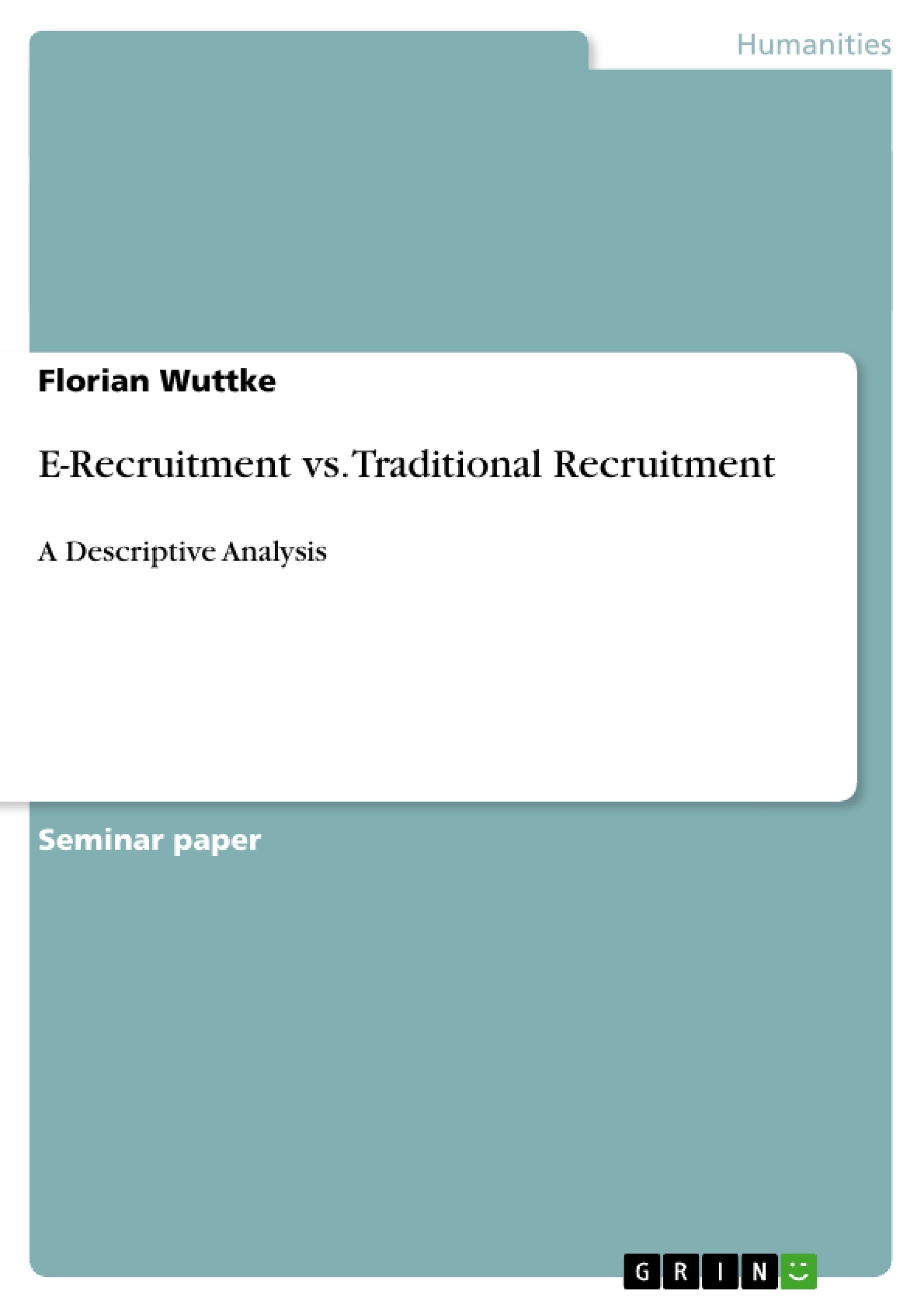In this paper the methods of recruitment through the Internet are going to be analyzed in regard to the traditional methods of recruitment. On the one hand there are the traditional recruitment methods, such as newspaper advertising, career fairs or personal contacts.
On the other hand there is the sector of e-recruitment which lately has become immensely popular especially among larger companies.
First, the problem is going to be sketched out as it is related to the temporary context. Before analyzing and discussing the problem in detail the methodological issues will be be outlined briefly.
Finally, the results will be presented and evaluated in conclusion together with further perspectives.
Inhaltsverzeichnis (Table of Contents)
- Abstract
- Problem
- Methodological Issues
- Analysis
Zielsetzung und Themenschwerpunkte (Objectives and Key Themes)
This paper aims to analyze e-recruitment methods in comparison to traditional recruitment methods. The objective is to outline e-recruitment, detailing its advantages and disadvantages, and determining whether the advantages outweigh the disadvantages. The study also explores which types of companies and employees are most attracted to e-recruitment and considers whether e-recruitment will eventually surpass traditional methods or if both will coexist.
- Comparison of e-recruitment and traditional recruitment methods.
- Advantages and disadvantages of e-recruitment.
- Types of companies and employees attracted to e-recruitment.
- Long-term outlook for e-recruitment versus traditional methods.
- The impact of recruitment channels on applicant quality.
Zusammenfassung der Kapitel (Chapter Summaries)
Abstract: Provides a brief overview of the evolution of personnel management and human resource management (HRM), leading to the discussion of e-recruitment versus traditional methods. It highlights the increasing popularity of e-recruitment among large companies and introduces the paper's central research question.
Problem: Explores the rapid growth of e-recruitment, citing statistics on its adoption by large companies. It discusses both the potential benefits (cost reduction, time efficiency, expanded reach) and drawbacks (lack of flexibility, potential exclusion of certain groups) of e-recruitment.
Methodological Issues: Describes the research methodology, which relies on a combination of literary sources and empirical data primarily from the Chartered Institute of Personnel and Development (CIPD) annual surveys on recruitment in the UK. It acknowledges the limitations of using data representative only of the UK.
Analysis: (Partial content available in preview) This section begins by introducing a quote highlighting the influence of recruitment channels on applicant quality. A full analysis of the findings is not available in this preview.
Schlüsselwörter (Keywords)
E-recruitment, traditional recruitment, HRM, personnel management, online recruiting, recruitment methods, applicant selection, cost-effectiveness, employee selection, CIPD, UK recruitment trends.
- Citation du texte
- Florian Wuttke (Auteur), 2008, E-Recruitment vs. Traditional Recruitment, Munich, GRIN Verlag, https://www.grin.com/document/120348



